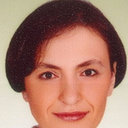Rosacea and cardiovascular risk factors: a case control study.
Atslēgvārdi
Abstrakts
OBJECTIVE
Rosacea is an inflammatory skin disease with a chronic course. This study aimed to investigate the risk of cardiovascular disease (CVD) in rosacea patients.
METHODS
The study included 60 rosacea patients and 50 age- and gender-matched controls. Demographic data, medical history, presence of cardiovascular risk factors were recorded. Waist circumference, height, and weight were measured, and the body mass index was calculated for each participant. Laboratory investigations, including fasting blood glucose, C-reactive protein (CRP), very low-density lipoprotein, low-density lipoprotein (LDL), high-density lipoprotein, total cholesterol, triglyceride, lipoprotein(a) were performed.
RESULTS
In all, 66% of the rosacea patients were female (mean age: 44.65 ± 12.9 years) and 66% of the controls were female (mean age: 42.3 ± 12.3 years). Median disease duration in the rosacea group was 36 months. High total cholesterol (>200 mg/dL), LDL (>130 mg/dL) and CRP (>0.8 mg/L) levels, a family history of premature CVD, and a history of smoking and alcohol consumption were significantly more common in the rosacea patients compared to controls.
CONCLUSIONS
Rosacea patients may have a high risk of CVD. As such, we recommend close follow-up of rosacea patients because of the increased risk of CVD. The mechanism underlying this increased risk is unknown, and additional randomized and controlled studies are required for clarification.


